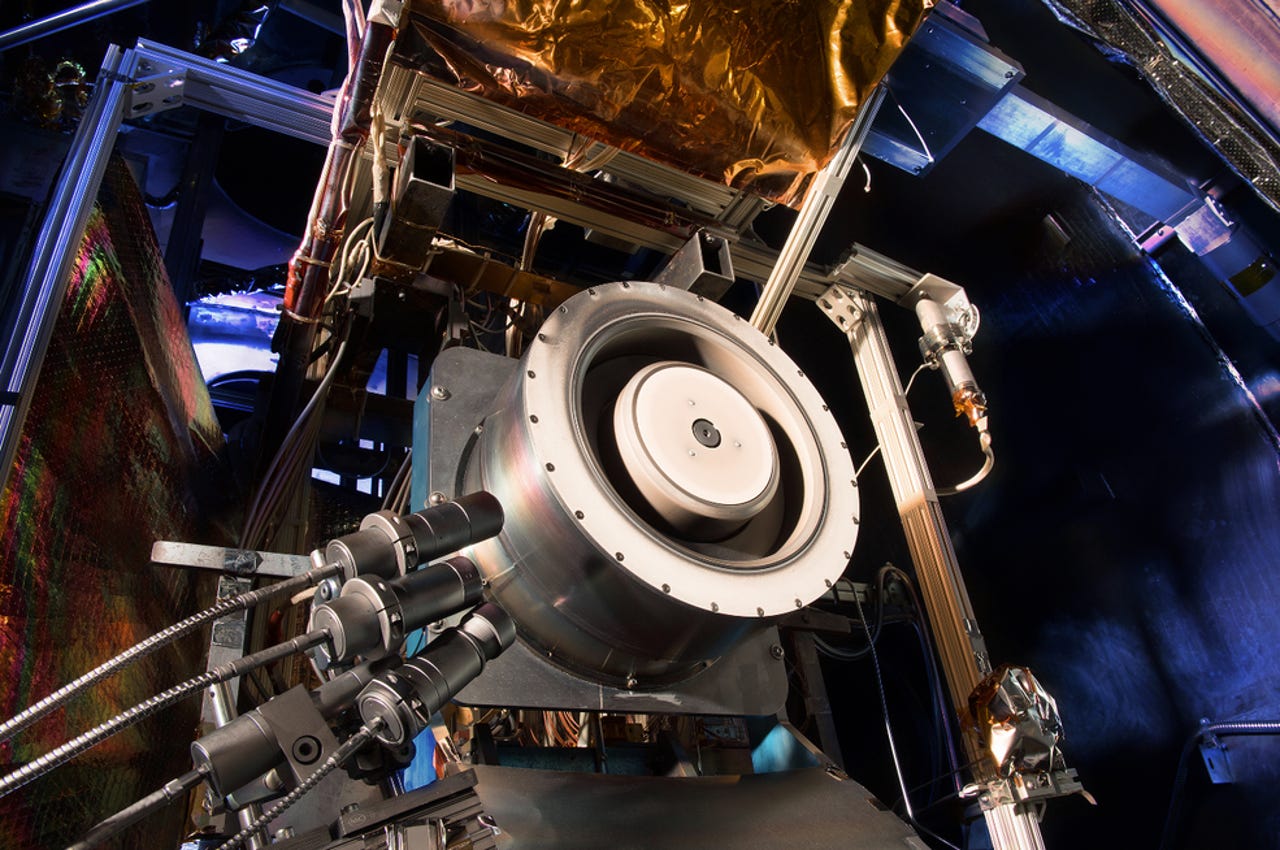NASA awards Aerojet $67m to develop deep space exploration tech


Advanced solar electric propulsion will be needed for deep space exploration. Shown here is a 13-kilowatt Hall thruster being tested at NASA's Glenn Research Center in Cleveland. It uses 10 times less propellant than standard chemical rockets.
NASA has chosen Aerojet Rocketdyne to design and develop solar electric propulsion technologies needed for both deep space exploration and commercial space missions.
The goal of the project is to boost space transport fuel efficiency by 10 times over current chemical propulsion technology and double thrust capability, potentially giving researchers the chance to view more of deep space than ever before.
The advanced electric propulsion system is intended for use in deep space exploration missions including NASA's Asteroid Redirect Mission (ARM) and a visit or two to Mars by the end of 2020.
According to a release announcing the contract, Aerojet will be given 36 months on the project, valued at $67 million.
Featured
"Through this contract, NASA will be developing advanced electric propulsion elements for initial spaceflight applications, which will pave the way for an advanced solar electric propulsion demonstration mission by the end of the decade," said Steve Jurczyk, associate administrator of NASA's Space Technology Mission Directorate (STMD).
"Development of this technology will advance our future in-space transportation capability for a variety of NASA deep space human and robotic exploration missions, as well as private commercial space missions."
NASA says the planned propulsion system will consist of a thruster, power processing unit (PPU), low-pressure xenon flow controller, and electrical harness. However, Aerojet has been given a helping hand for the initial design as the firm will be able to use a prototype thruster and PPU already being tested by NASA.
STMD has already funded solar array system research, and the US space agency says the new contract could use this research to power the new flight system through solar power. This, in turn, could allow the propulsion system to generate its own power for longer, leading to further travel than current systems can go without running out of juice.
NASA is already using pilot solar electric propulsion in several probes, including the Dawn mission, which surveyed the giant asteroid Vesta and Ceres between 2011 and 2015. The solar arrays are part of NASA's Solar Electric Propulsion (SEP) project.
The agency hopes the new research will also come in handy for ARM, NASA's ambitious plan to capture an asteroid and hold it in the moon's orbit after 2020.
10 steps to erase your digital footprint
Read on: Top picks